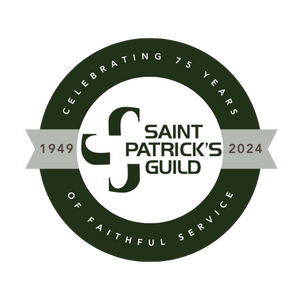A Brief History of the Rosary
06-10-2020
Seeing or hearing about Catholic church rosary beads likely conjures thoughts of devotion, meditation, and time-honored tradition. But we don’t often stop to think about the history of the rosary, the evolution of the rosary practice, or the true meaning behind those ubiquitous rosary beads. Here is a brief history of the rosary and its connections to the Catholic church.
Praying the rosary is a predominantly Catholic practice with a rich history and tradition. Most scholars agree that repetitions of prayers using strings of beads or rocks existed during pre-Christian times. These early forms of rosary beads and their associated prayers evolved over time. The structure of the rosary, as it is most commonly known today, can be tied back to St. Dominic in the 13th century. St. Dominic, inspired by a vision from the Virgin Mary, preached the use of the rosary during mission work.
St. Dominic believed that praying to the Catholic church rosary honored significant events in human salvation. These events are grouped into mysteries. Going through each mystery involves saying an Our Father prayer, followed by ten Hail Mary prayers and finished with a Glory Be. Rosary beads help the person praying track these prayers, as one is supposed to touch or hold the large bead at the beginning of a mystery as the Our Father is said; the smaller rosary beads that come after the larger bead should be grasped during the Hail Mary prayers.
Today, most Catholic church rosary beads are glass, plastic, or wood and are strung together by small metal links or chains. Beyond forming a necklace-sized piece, rosary beads can be bracelet- or even ring-sized. People have different preferences when it comes to rosary beads and styles, but the most basic (yet important) purpose is to provide a physical reminder of these powerful prayers.
With a brief history of the rosary and the importance of rosary beads in mind, below are five additional interesting facts about Catholic church rosaries:
- Some Protestants pray the Anglican rosary, which was developed in the 1980s by leadership in the Episcopalian church. Some Lutherans and Methodists use such rosaries as well. There are 33 rosary beads on such rosaries; 33 signifies the number of years that Jesus lived.
- The word “rosary” literally means “rose garden” or “rose garland.” It is easy to understand, then, why a string of beads – much like a garland – came to be known as a rosary. Some say “rosary” means “crown of roses,” which also harkens the standard circle of rosary beads.
- Until relatively recently, there were only three mysteries. Pope John Paul II called for the addition of theLuminous mysteries to the existing Joyful, Sorrowful and Glorious mysteries.
- Even though St. Dominic popularized the praying of the rosary and the use of Catholic church rosary beads, it was not an official devotion until 1569, approved by Pope Pius the V.
- Pope Piux XI dedicated the month of October to the rosary in the twentieth century; the Feast of the Blessed Virgin Mary is October 7th.
Check out more articles from St. Patrick’s Guild to learn more about the Catholic religion along with religious gift ideas, and church supplies.

